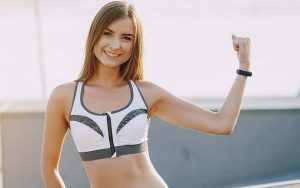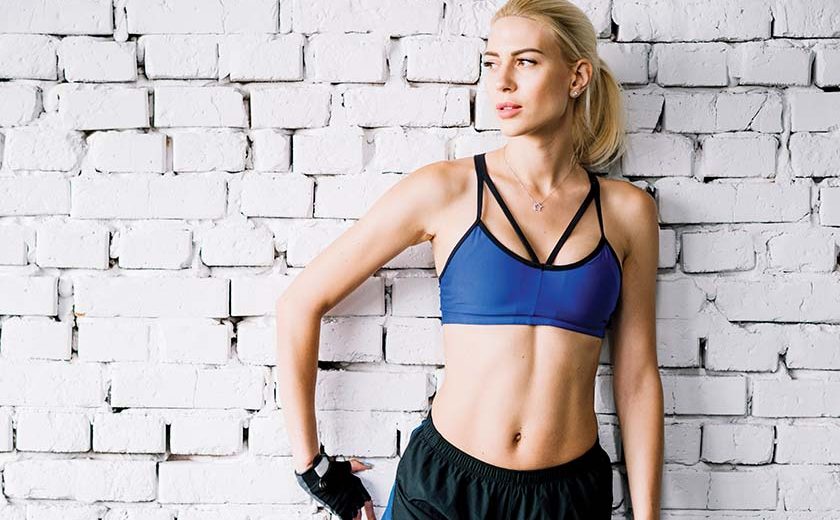Who are we kidding? There are many of us who don’t even wear the correct bra yet alone the correct sports bra.
But, this is no joke because if you don’t take care of your ‘girls’ at an early stage, there is a high possibility of getting premature sagging, back pain, elongated ligaments, breast injuries, chafing and heat rash! So, now that we have hopefully scared you, take these pointers to heart or should we say your breast, the next time you’re on a workout!
1. Optimum Support Level
- Low Impact Bras: Yoga, climbing, paddling
- Medium Impact Bras: Walking, road biking, skiing
- High Impact Bras: Running, mountain biking
2. Hand Wash Only!
If you want sports bras that last for a year, hand wash the garment and avoid the spin cycle. Use gentle detergents and avoid fabric softeners. If you must put it in a washing machine, fasten any hooks first. Avoid putting your sports bra in the dryer because even on a low setting, the heat can break down your bra’s elastic.
3. Measure Yourself
Stand in front of a mirror wearing a non-padded bra and use a cloth tape to get your bust measurement (at the fullest part of your chest) and your band measurement (around your rib cage, just under your breasts). Add 3 inches to the rib cage number for final band measurement.
4. Watch Out For Runaways
If your ‘girls’ try to escape the bottom of your bra when you raise your arms, you need to try a smaller band size to keep things snug!
5. Whoa, Down Boy!
It needs to be down, at the back! Turn sideways and check the back of the rib band, if it is pulling up and riding higher than the front of your sports bra, the band is too large or the straps are too short. Choose a smaller band size to keep the band at the right level, at the back or re-adjust your straps (if it is adjustable).
6. Cleavage Control
Look straight down. If your breasts are struggling to get out or if the underwire seems to be sitting on your boobs rather than flat on your chest, you need a larger sports bra or you need to go one cup up.
7. Bounty That Spills
If there is boob spillage on the sides or at the top of the bra, you’re definitely going to need a bigger cup size.
8. Cup Wrinkles
Don’t think that folds, wrinkles or looseness in the cup isn’t a big deal because it only brings about weakened support and chafing. Go down a cup size!

9. If The Back Hurts
If you’re experiencing breast or back pain, your sports bra isn’t doing its job. This also might mean that you’re wearing a sports bra not meant for the activity you’re doing. The bra you use for yoga should not be the bra you use for running.
10. Dig Me Not
If your straps are digging into your skin, it is not the right fit. Sports bras come in different styles which includes the wide-set or racerback versions, choose one that fits your body and routine.
11. Preggers Or Breastfeeding
During pregnancy or when breastfeeding you will need the maximum support available. In addition, your bust size will change throughout your pregnancy, so consider buying an adjustable sports bra to avoid frequent replacements.
12. Smaller Or Larger Than Average
Usually, women with smaller chests find compression sports bra comfortable while those with larger chests would receive more support from encapsulation bras. However, this depends on your comfort and preference. So, if you’re still unsure, talk to the sales consultant to further determine what style suits you best.
13. Pullover Or Back-Clasp
The pullover style allows you to cover more of your back but this means there’s no front or back straps and you cannot adjust the bra, especially when you need to anchor large chests. If you have larger breasts, a back clasp may work better as you can tighten or loosen the band according to your preference of support.
14. Racerback Or Wide-Straps
Racerbacks will anchor the bra closer to your body to the cinch in the back, providing more support while wide straps will distribute the weight better, adjustable and often better for those with a larger chest.

15. Encapsulation Or Compression
Sports bras with individual cups which are known as encapsulation are better for larger-breasted women while shelf bra styles (compression) work for smaller cup sizes or for low to moderate-impact workouts.
Reference
Runnersworld.co.uk


